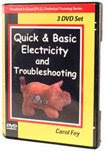
There is a scientific diving team here that has developed a special camera for exploring under the ice where no one has been able to look before. My significant other Patrick has been working with them.
This is permanent ice about 300' thick. The team located a fissure, or crack, so that they had to drill through only 6' of ice to get to water.

They drilled a 10" diameter hole, and lowered this camera, called SCINI (skinny) because it's long and thin to fit through an ice hole. SCINI also stands for Submersible Capable of Imaging and Navigating Under Ice. They can guide SCINI from above the ice and see what it is seeing. It also takes photos.

They found a remarkable abundance of life: anemones, sea sponges, sea cucumbers, brittle stars, and luminescent jelly fish. They were surprised to find fresh water immediately under the ice--caused by glacial melt. Glaciers are frozen fresh water, and these are on top of sea water.
Patrick designed and made a cradle that holds SCINI when it's on the ice.
Hopefully we'll get pictures of the under-ice life they found.


























